-
Posts
1,331 -
Joined
-
Last visited
-
Days Won
1
Content Type
Forums
Detector Prospector Home
Detector Database
Downloads
Posts posted by EL NINO77
-
-
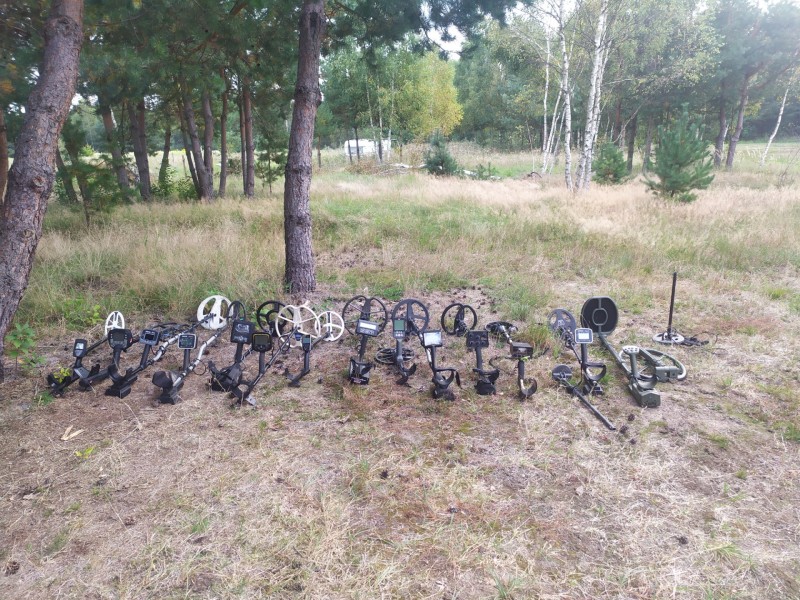 When we tested various VLF detectors for a small 18.5 mm -3.2 gram nickel coin in a very light forest terain /mainly sand terain/... the best detectors there reached a depth of correct detection for a weak but still repeatable good signal somewhere on the border of 34-35 cm. ..
When we tested various VLF detectors for a small 18.5 mm -3.2 gram nickel coin in a very light forest terain /mainly sand terain/... the best detectors there reached a depth of correct detection for a weak but still repeatable good signal somewhere on the border of 34-35 cm. ..
the total detection range of the various detectors was from 26 cm as the weakest result, for other good detectors on 9" coils, 11-13" coils the detection range was somewhere at the level of 29-30-32 cm depth of detection..but they are almost an ideal detection environment from the point of view of depth of detection..
That's why it's always interesting for me to see Jeff's tests of his detectors in his heavily mineralized terrain.... which can really change the depth results of different detectors...
-
 2
2
-
-
George...It will be good to see what this Analogue detector can do....
I still had the opportunity to detect with digital AKA Signum and AKA Intronik... I will say very powerful detectors ....-
 2
2
-
-
9 hours ago, abenson said:
I've been reading this thread wondering myself if the 6000 or 5000 would do better on a 2 gram nugget. We've had a spell of good weather this last week so I decided to get out today before the next storm moved in and do a depth test. I don't have a 2 gram nugget, but I do have a .95 & 2.69. I buried the .95 gram nugget at 8" and the 2.69 at 9" I also buried a 1 oz lead slug at 10" and 2 .58 cal minie balls that weight 1.5 oz and buried those at 12" and 14". The soil I did the test in was damp and on the Deus 2 will almost fill the mineral bar half way, my soil is also alkaline. Obviously results in other soil types may be different. I don't have the 5000 but I do have a 4500 so that is what I used. Both the 6000 and 4500 had 11" mono coils on them. BTW I tried using the Deus 2 with 11" coil and it failed to hit any of the targets.
First up was the 6000, on the .95 it was a soft but obvious signal using normal timing, sensitivity 2 notches from max. The 2.69 gram nugget was stronger and very obvious, 1/2 oz slug was very loud, 12" 1.5 oz was soft but obvious, 14" was a no go. Next up was the 4500 11" mono commander coil, running normal timing, motion slow, sensitivity at preset, GB fixed. 4500 couldn't hear the .95 I also tried sensitive extra with no luck. 2.69 was very obvious and feel like it gave a better response than the 6000. 1 oz slug was also very loud on the 4500. 12" 1.5 oz was very obvious and the 14" was a no go. I don't have a large coil for the 4500 yet, but I did try the 13 x 17 mono on the 6000 and still couldn't get the 14" 1.5 oz lead. But over the 12" it boosted the signal to the point that I felt like it sounded like the 4500 with the 11" mono.
I wish I'd of had time to bury some of the targets deeper and maybe bury the 14" 1.5 oz somewhere else as there may have been a hot rock of something interfering with it. But a snow storm was coming over the mountain and I had to leave. I did a video of the test and at some point will post it on YouTube.
Side note as I know this thread was about the 5000 vs 6000. I took the Axiom as well with the 11x13 mono. It wouldn't hit the .95 gram at 8" But did hit everything else with obvious signals except the 14" 1.5 oz slug.
As far as 11" coils go, I feel like on multi gram targets all 3 machines are fairly close in performance, within an inch. However, I'd give the edge to the 4500 especially since there are way bigger coils available for it.
Andrew, I will tell you.. that you have done a very interesting test...
When you wrote that the Deus 2 on the 11" coil did not detect any of the tested targets... it is obvious that this terrain is really difficult and extremely difficult.../ even if the mineralization meter of the Deus 2 is at half of the mineralization scale/Furthermore, it is also interesting how quickly the detection properties of PI detectors change in relation to the depth and size-weight of the target...
Another surprise in this test is the finding... that the depth of 14" on a 1.5 ounce 0.58 Minie bullet is probably the limit even for 11" coils with such very good PI detectors...
I have one question... can you publish a picture of a 0.95 gram gold nugget..._?
I am interested in the shape, size and structure of this nugget..
Thank you for this test...👍

-
 2
2
-
-
Disc setting of the IAR disc can first of all change the discriminative properties, for example, when identifying iron.. where setting the IAR to 5... will most reliably identify iron...
on the other hand, setting the IAR discrimination too high when detecting small non-ferrous targets in mineralized terrains can lead to a more ferrous or even ferrous response to these targets.-
 2
2
-
-
Thanks for another interesting test...Jeff ...
....as well as your thoughts on how the tested detectors performed on the targets...
It was also interesting for me to compare the low-conductivity 5-cent Nickel and the high-conductivity Quarter on American coins... it can be shown, in my opinion, that both Axiom and GPX detectors are somewhat optimized for low- and medium-conductivity targets such as gold... even though they don't have a problem and they can also detect a highly conductive target like Quarter...
Furthermore, it turns out that VLF detectors definitely have limits in such a field...and the use of a PI detector can really help there.
I see this area as a very good place for testing VLF detectors... because here you can very quickly see differences in how different models of VLF detectors work on such complex targets....

-
 2
2
-
-
Basically, it is about 2 tested targets with different time constants, so the lighter 0.5 grain .. but the larger target produces a higher time response and is therefore easier to detect for ATX..
This 1.1 grain nugget, from the point of view of its smaller size as well as its shape and gold content, may have a smaller time constant - beyond the possibility of ATX detection..
If you want to detect extra fine targets with ATX - you have to increase the sensitivity of the detector as well as set the threshold high to the value of 12-12.5 .. on this detector because a really high threshold setting will allow you to hear very small targets...ATX with a small 3X7" infinium coil can hit the finest targets even further than a 10x12 DD ATX coil.-/0.01 gram gold/.....you can also notice that small and flattened lead shot number 9 are not detected, because the lead alloy has a significantly lower time constant than pure 24k gold...
ATX 12x10" DOD coil..
----------------------------------------------------------------------------
ATX with a small 3X7" infinium coil can hit the finest targets/0.01gram gold/ even further than a 10x12 DD ATX coil...
-
 4
4
-
-
Well, we can go further and we can explain how it is with the VDI rock for detectors...
Anyone who has been using detectors for a long time knows that many detectors use the classic VDI scale : Note where the nail zone is...Rutus VERSA uses a similar VDI scale as Whites... with the fact that it has a shortened scale that goes up to -29 ...
------------------------------------------------------------------------------------------
now let's move on to Legend and its VDI scale
https://www.iratemetaldetectors.com/product-page/nokta-makro-legend-target-id-bible
All VDI numbers from 1VDI to 11VDI are iron zone.... if you have tone break set in that VDI zone .. then you have it set so that the signal from the iron zone sounds like a non-iron signal... / so you are also working with "negative discrimination" /

and XP Deus uses this VDI scale:
-
 1
1
-
-
Jeef..have you tried increasing the IAR disk in the gold program in Deus 2?..from 0 to 1,2,3 and with what results?. on nuggets and from the results on coins...
The mineralization meter on the Deus 2 indicates... that even a VLF detector can be reasonably successful here..But I also believe that PI detectors Axiom and GPX 5000...are simply better here and have a better depth reserve ...
Thanks for this test and comparison.👍....but like others, I'm also looking forward to your next in-depth detector test in this field...

-
 2
2
-
-
Setting the threshold determines the limit where the detector will not yet respond to the ground signal, but can already give an audio response to the reception of a signal that exceeds the limit... of the set threshold...
At a low set threshold, the detector will be slightly sensitive to the ground signal,,, and will be very stable. But to detect the target, you will need a stronger signal from the target....-so that this signal breaks through the low set threshold level....because like this the set detector is even slightly sensitive to very weak target signals...
It's something for something.. therefore, with a low set threshold, the detector may not detect very small and weak signals... but it will detect larger and stronger signals from targets...On the contrary, if you increase the threshold, you increase the sensitivity of the detector to the ground signal... but at the same time the sensitivity of the detector to weak signals from the targets... but be careful... with a high threshold set, a strong ground signal can cross the threshold as a detected signal, what will happen like this a high-set threshold will make the detector unstable on the given terrain...
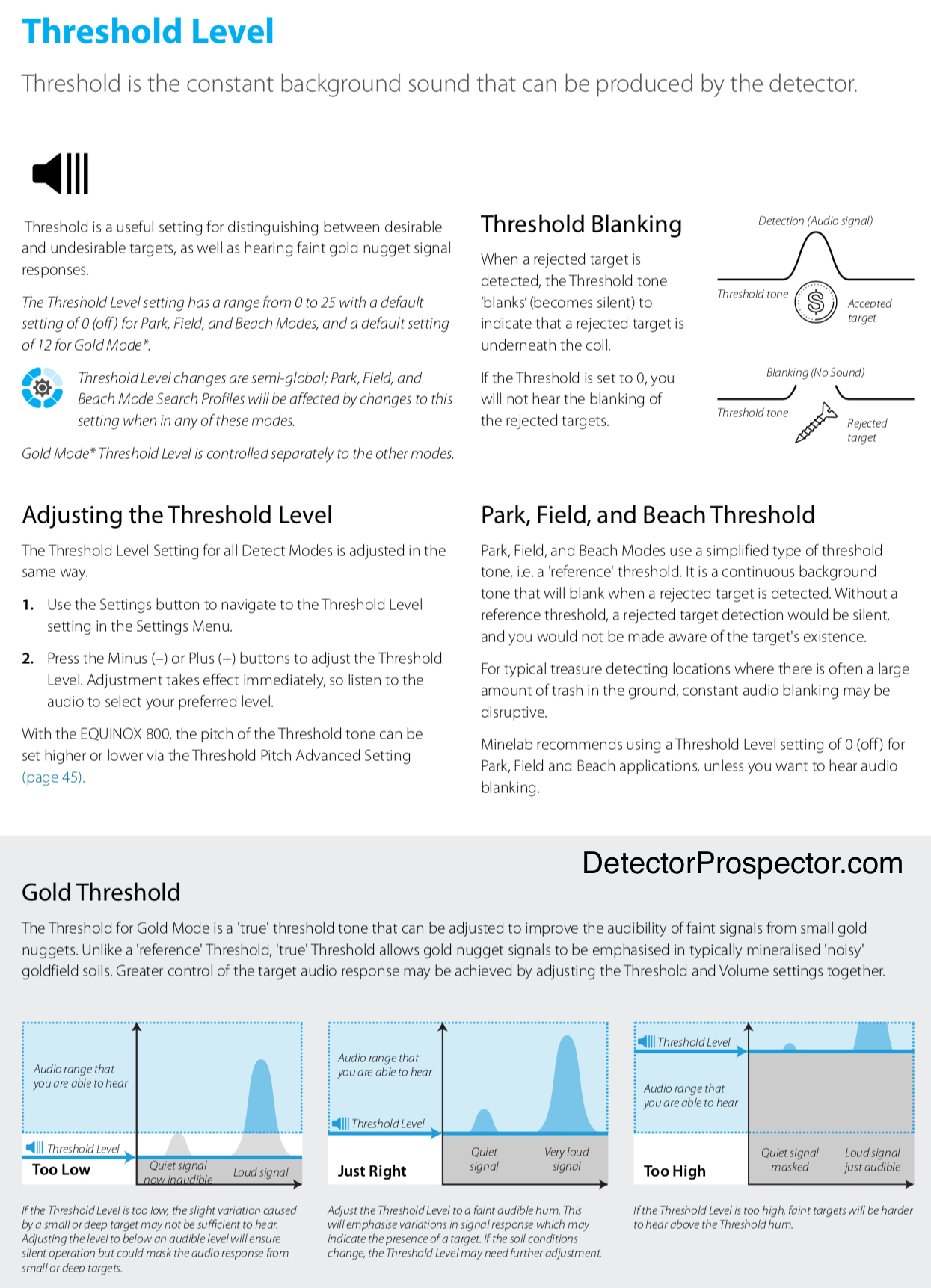
-
 3
3
-
-
I believe that this video will help someone in the independent replacement of the battery in the Equinox 800/600.....
-
 3
3
-
 1
1
-
-
The target ID function may not be a bad thing on this Pi detector... I wonder how the Force 1500 will identify small lead pellets with the help of target ID, for example, and under what ID similarly small gold...
But in any case, it can be quite a useful function... even for coin and relic seekers...
I myself often dig for coins and relics first that are in a certain VDI range .. /VDI of coin targets that occur in the given terrain/...and during subsequent detections I lower the VDI limit to a certain range .. where, for example, pieces of small coins..
This is where this Target ID feature could come in really handy...
In any case, the Force1500 can be an interesting detection machine.....
-
 1
1
-
-
Simon.. you have a very good observation... different CDs and DVD-Rs really have variations in the thickness of the metal recording layer... that's why I also chose a CD that is less visible during the tests - it has a finer recorder and detectors in the Beach programs they don't see or detect this CD anymore...
As a second disc.. for the 2-stage conductivity detector testing.. I chose the DVD-R disc because it has a significantly stronger metal recording layer... and therefore it is also better visible on the detectors in the Beach programs...
this allowed me to do a 2-step comparison of any program or detector settings for conductive terrain..In this way, for example, you can easily find out the level of resistance of a given program and setting .. when detecting on a conductive field ..
And what is most important .. you can transfer this knowledge .. only in real detection on some terrains ..
Some terrains can be medium-difficult terrains when dry...the situation can change if the terrain is also wet or wet...so different salinity, ash, calcium, ceramics, and civilized deposits create really difficult conditions for proper detection...remember who cold rock, of which there are many... and you have an excellent test environment .. to test the detector..
Rutus ATREX in the test field on a multi-frequency program with elimination of field conductivity..
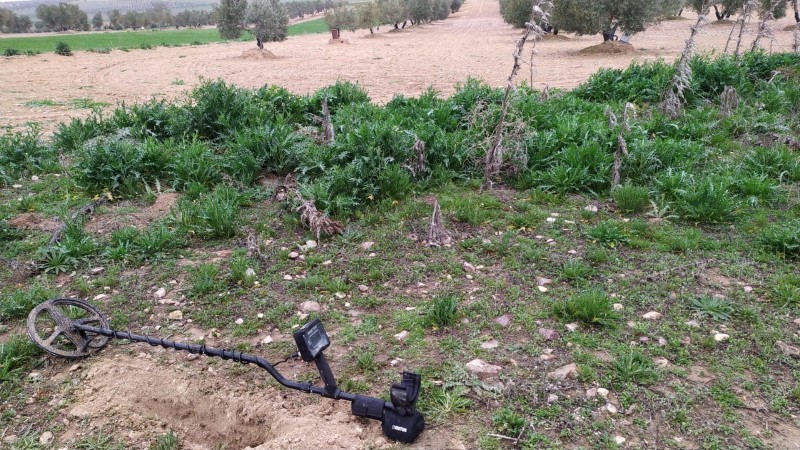
or another example is here:
-
 2
2
-
-
When I bought Rutus Alter 71 v2, which passed such a 3D test perfectly, I already knew that it would be a really excellent unmasker..Further ground 3D separation tests on coins at different depths in the field and detection only confirmed it...
Thin 2cm -0.90 gram 9K gold ring in Such a 3D separation test is a really challenging target.
-
 1
1
-
-
16 minutes ago, Iffy Signals said:
Ah ok, thx for the info. The Orx is a single freq machine. My tests are all In Multi Freq vs Multi Frequency machines.
ORX is one of the standards of 3D separation,,, but detectors from the Alter71, ATREX and VERSA series are also excellent in 3D deep separation...
ALTER 71 found and unmasked the most gold coins for me /11 coin / ,,.Equinox 800 /3 coin /
ATREX other /4/.. those. mostly disguised by iron...Such are my experiences and detection practice...
-
 1
1
-
-
Iffy, I don't know if the Legend will work better out of the box when it is set to tone break 10...

-
 2
2
-
-
Iffy, I'm honest... in October of last year, I did a comparative separation test of VERSA on the NC software with my ORX with a 9hf coil ..
..a small nickel coin is placed at a depth of 11 cm/middle placed green ruler /..between two nails that are on the surface of the ground..
ORX..
ORX coil sweep by 90 degrees...
------------------------------------------------------------------------------------------------
And now we will say .... where did I make a mistake in the tests..?
. I set each detector so that the test reaches the limit where the detector can reliably discriminate these nails... so they are at the same starting position...!!!-
 1
1
-
-
Greetings.. Mike.../Iffy Signals/ if you have read this whole thread then you know what I mean... as a tester of Atrex and VERSA I know very well where the limit of discrimination of iron...and non-iron targets is with these detectors ....
And not only with Atrex and VERSA, but with the other 25 detectors that I own...
and I know what each detector can do not only in synthetic tests but also in practical detection in the field...Iffy, you think you have as much experience with the VERSA detector... as Testers.. who have been testing and detecting in the field with this detector for more than a year?
I have been using Rutus detectors since 2012... so I know the settings of these detectors very well... where these detectors used negative discrimination...
If you read this Thread, you will understand how sound profiles are set in VERSA..
As a detector Tester... she will certainly be interested in the practical Test Versa on the really difficult Top Digin test field where many targets are stored as separation targets...
The test was done by the owner of the test field ..Mike"...who is a Minelab Manticore Field Tester ..
The VERSA software is still being worked on, it is a continuous process where emphasis is placed on various aspects of the further improvement of the Rutus VERSA detector.
-
 1
1
-
-
The position of the external battery in the HF coils is not a bad idea... because you can use, for example, a battery with a larger capacity in the future, but also the aspect of easy replacement of the old battery for a new one.. at any time and that's what I really like about HF coils..
I even thought that XP would go in this direction right at the multi-frequency detector...but let's face it... such coil malfunctions don't happen every day,
I'm rather reacting to the fact that I'm far from home... and I can't compare this coil on my second ORX detector...
-
 2
2
-
-
Simon, I have the same problem with the 5.5x9.5" HF coil as you ... after I went to Spain, I could no longer connect it to the ORX RC unit...
I tried to disconnect the battery of the coil "and measure its voltage", the battery voltage was fine,,, I even disassembled the Rc unit.. and disconnected the connector from the battery of the *RC unit. ORX...but I still no managed to connect the coil from the RC ORX unit..
-
When testing the detectors, I found that the DVD-R disc is significantly more visible to the detectors than the CD disc... so if there is a detector program that has a built-in conductivity elimination, then even if the CD disc is no longer detected... so with the help of an air test with a DVD-R disc, I can determine how strong the elimination of conductivity is on the given program..

-
 2
2
-
-
Now to the VERSA ... I myself go from the Versa to the multi-frequency Low conductor setting - Park program, discrimination -3,, on my edited multi-tone audio profile USER1, which proved very good for me when identifying non-ferrous targets where I can hear very well how conductive they are these targets...as well as I know very well how to identify potential iron targets that I avoid and don't dig
You can print the result of the detection on this picture, which shows all the targets that I dug up in the detection... and you can also see the ratio of non-iron targets to iron targets...only 3 iron targets, of which 2 bottle caps and one forged small nail with a large head.
In this type of detection where I focus on the detection of old hammered coins.. I usually dig only targets that have 18 VDI/can be 1/4 cut hammered coins// and higher VDI. where there can be potential old coin targets..-
 2
2
-
-
JCR..The CD disk shows where the exact border of iron / non-ferrous metals is... and the CD disk already has something like VDI 0-1 in the zone of non-ferrous objects ..
...yes, another good test with the help of a CD is a test of the detector or detector programs for resistance to conductive or salty terrain...
I invented a 2-stage test procedure myself... using a CD and a DVD-R disc for a two-stage Analysis of a detector or a detector program from the point of view of work on a conductive field...Atrex Multfrequency .. for conductive terain..-the detector on this program does not see the CD, but the DVD-R is visible even at a very short distance.
----------------------------------------------------------------------------------------------
for comparison, let's take the ATREX at 1 frequency of 15 khz - the detector sees the CD disc already from a long distance... and the DVD-R disc can see much further than the CD disc...
-
 4
4
-
-
I think you have very good thoughts, no person can be an expert of a given detector that has only a few days in hand, and does not even know well how the basic functions and settings of the detector work.
Even a field tester of a given brand of detector needs significantly more time to become an expert of the given detector that he tests ... as well as compares the practical detection results with other detectors available for checking the detection results...
and true detection in the field will show how many targets and what targets the given detector can detect....It is also a surprise..that some "experienced American testers" do not know how the detector works from the negative scales of the VDI identification target..which was the domain of the American detectors of the Whites brand...how to use such a negative discrimination setting for better detection of non-ferrous metals target... where for some experienced detectorists it is a normal everyday practice...
Another surprise is that they cannot find out what is the real limit of discrimination between VDI iron targets / VDI non-iron targets using a simple air test with a CD.
this test procedure with a CD disc is very often used to calibrate the discrimination of the detector, or verify the correctness of the set discrimination of the detector.
It might surprise someone that Deus 2 will have VDI 25-27,,, and Nokta legends will have VDI 11, so the position of the lower discrimination setting or tone break is actually also the use of "negative discrimination" in favor of better detection and separation of targets.
-
 4
4
-
 1
1
-
-
On 1/21/2024 at 11:05 AM, palzynski said:
Thanks Slavomir ...
Very interesting post . Up to now I havent found a reliable separation board test for my local ( and difficult ) conditions and I am still searching 🙂... . I do have reliable bed tests for pure depth assessments but still not for separation ..
Yes your test is very difficult, but however no matter the difficulty as long as it is reliable to show the ability ( or not ) of a detector/coil to work in the field in real conditions ...
The main difference between your test and Monte board test is the use of a lot of small bits of iron instead of a few big ones. My be this is the key to simulate our local environments , which probably contain much more small bits of iron than bigger ones , especially in open fields where the big ones have been broken by plough and tractors ..
It is a very good idea , I will make one as soon as I have some time available and let you know how it goes ...
Have you tried this test with other detectors/ coils btw ? thx
Alain, greetings to you... this nail carpet test of mine was entered on the basis of simulating detection in conditions that will be more difficult for the separation of targets in iron ... as simulated by the Monte performance nailboard test.. where coils around 8.5-9" still perform reasonably well pass the Monte test...even if not with the full number of points achieved..
This forced me to think about how many targets the 9" coil can prove... to miss in the field with really strong storage iron .. - even in more demanding detection conditions than the Monte performance separation test simulates... and what targets they will be..
After very good practical experience in finding iron-disguised targets in the field... and finding beautiful coins... with a small 12cm concentric coil on the ATREX... as well as the fact that this coil performed the best in the Monte Nailboard test... I was curious to what to what extent can it pass this extreme "carpet of nails test .. and to what extent can the 6", 7", 8" and 9" DD coils that I use on my detectors cope with such a test.. !!!
-
 2
2
-

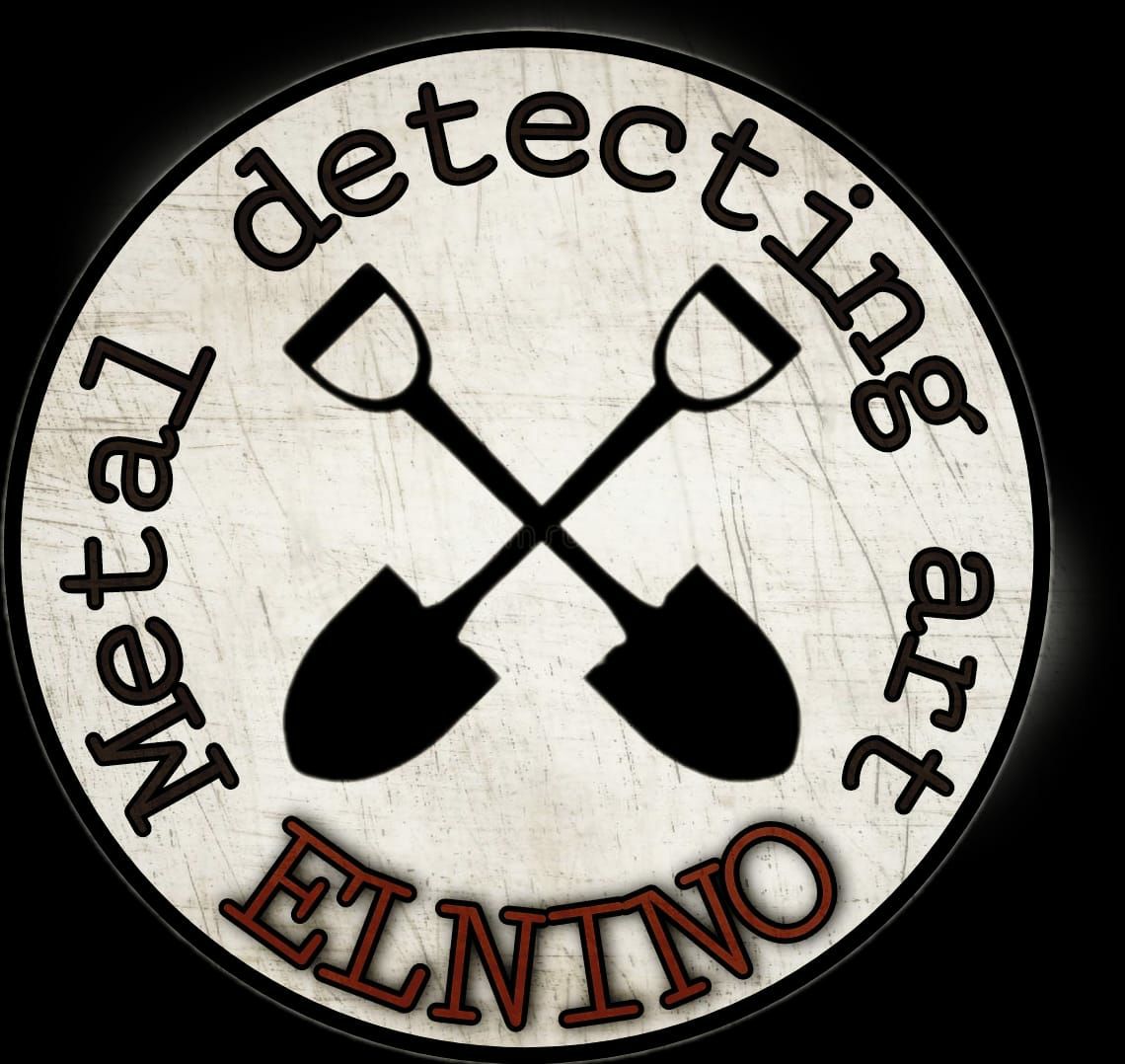

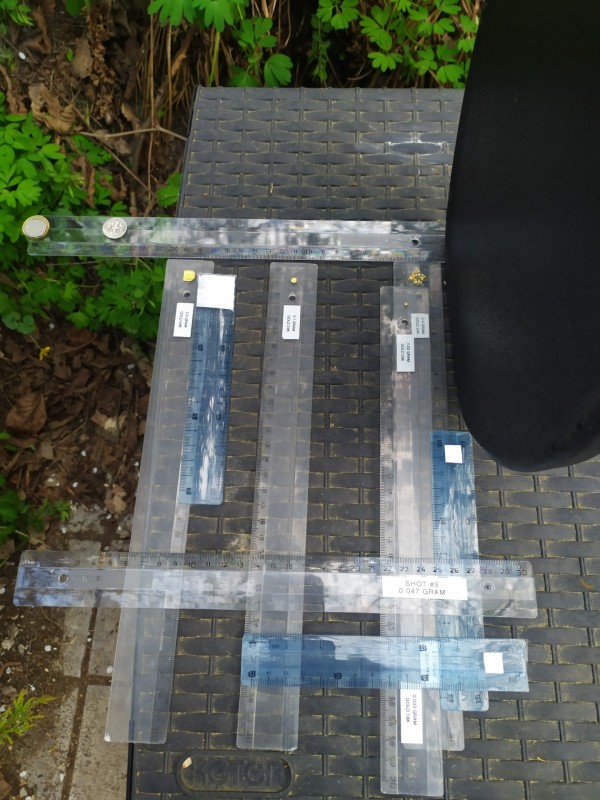
.thumb.jpg.e154a38cb9bafc28144edb230e5f47bf.jpg)
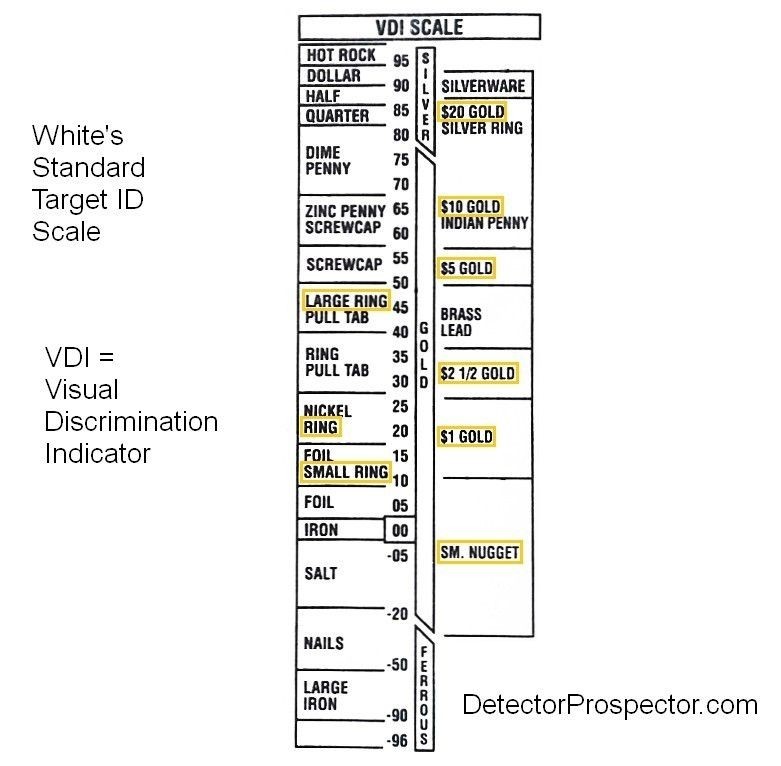
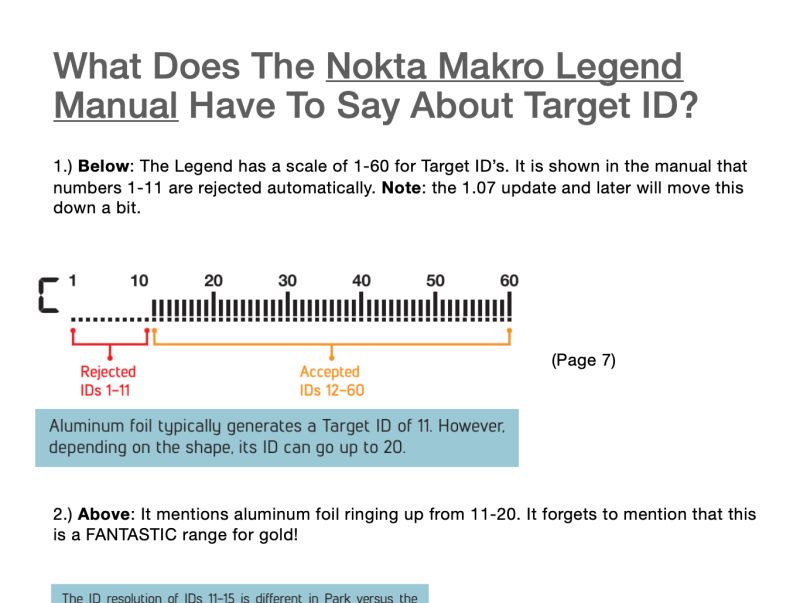
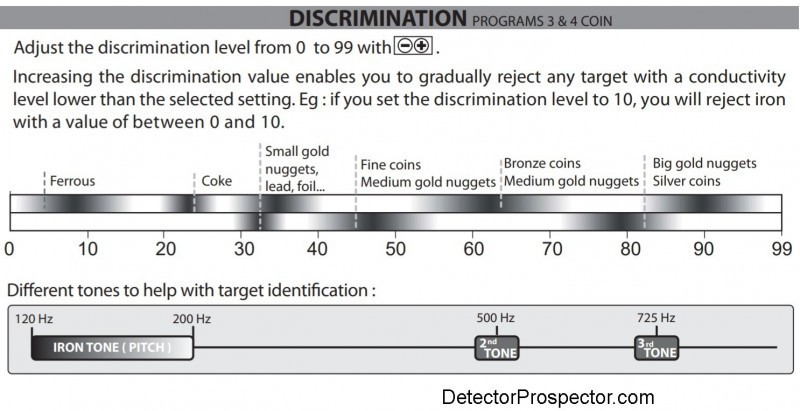
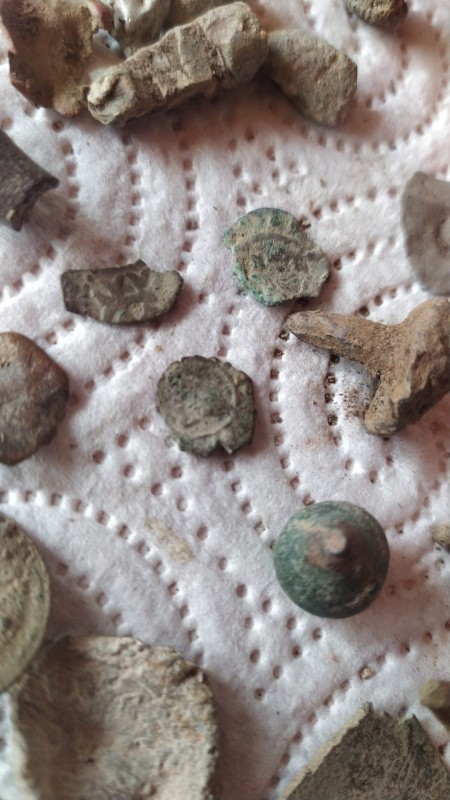
.thumb.jpg.4213116fcdd9e474a06b611fa6f3b9f1.jpg)
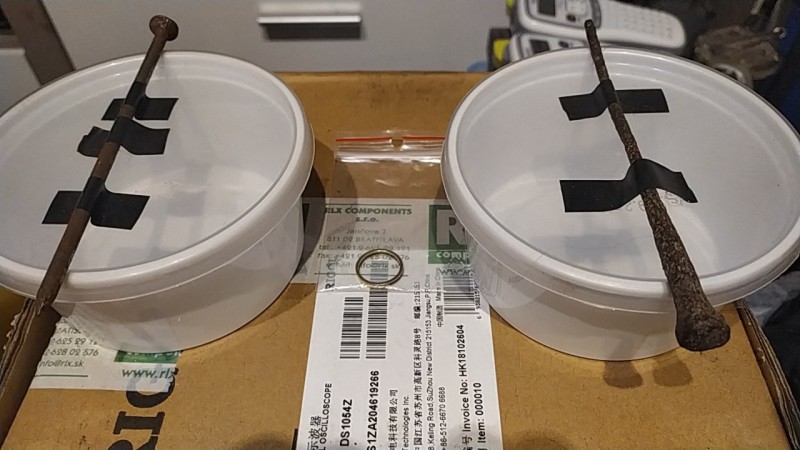
.thumb.jpg.f548f47dd240a01112db2079a076d1e9.jpg)
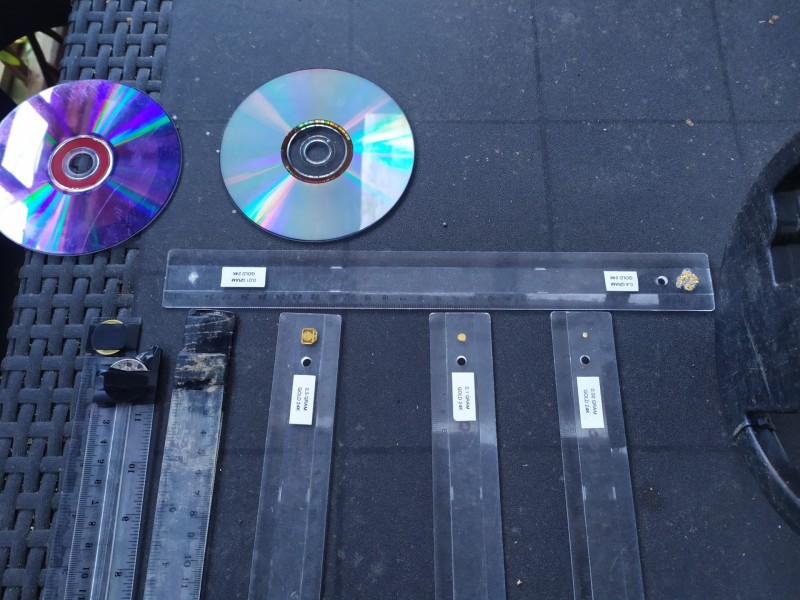
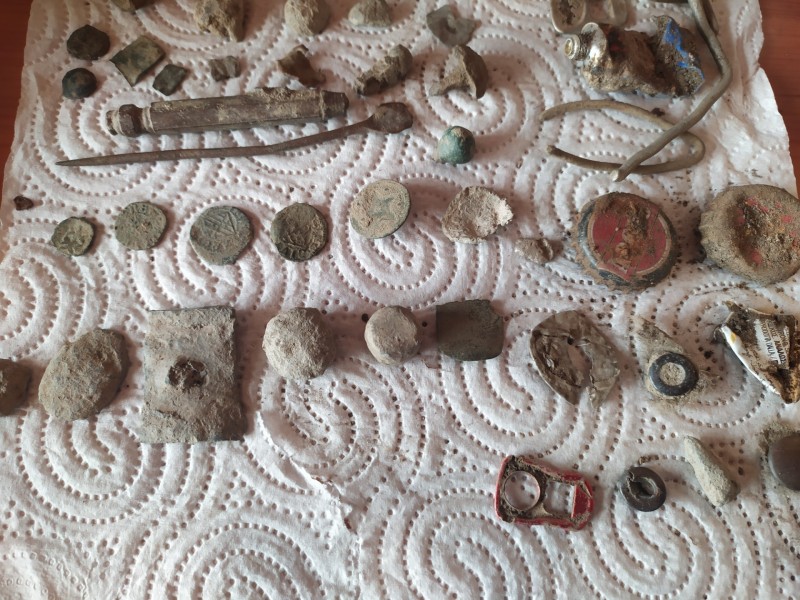
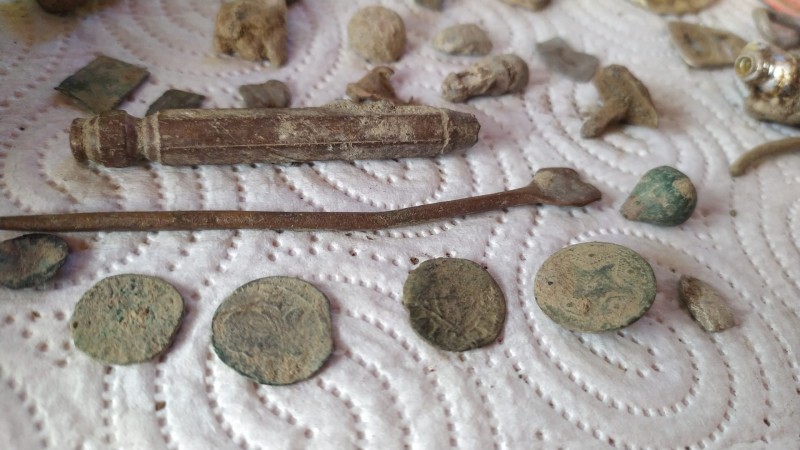
.thumb.jpg.8a2f5b7fd3baa68bf8ecde1fb1514fc3.jpg)
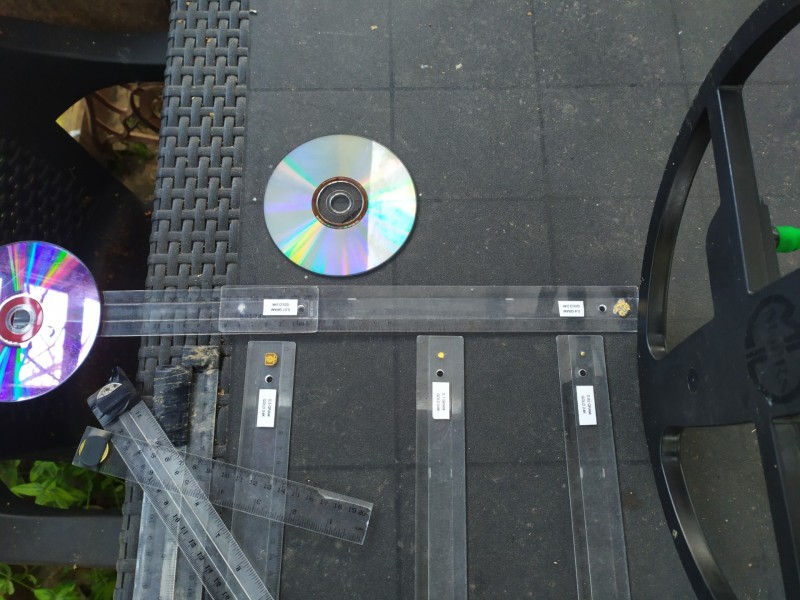
Axiom 13x11 GPX 4000 14x9 Coiltek Depth Test Deus 2 Also
in Metal Detector Advice & Comparisons
Posted
"Golden Forest "-extra mineralized magnetite terain-- 6-7 bar Fe3O4 mineralizacion measured Teknetics G2..
.....Alain, you are definitely using a test box that already has a moderate degree of mineralization... and therefore your results will be 20 or maybe even 25 percent less than it would be in the case of a test box with pure silica sand..
This only indicates how the depth of detection can change in a different type of terrain...
Since I myself have and use my low-mineralized test field, I can accurately assess the real range of various detectors in my test field... even a very deep 25 mm coin such as 50 eurocents is stably and regularly detected with good detectors with large 13"-15" coils on 38-39cm deep, which is 15.5" inches... Really amazing results..
But my colleagues have another 5-6 different mineralized.. test fields.. and there the depth of detection changes quickly according to the level of mineralization of the terrain..
since we also have an extra strongly mineralized terrain "Golden forest" .. it is at least at a similar level to Jeff's, it is really good to see how the results of his test really turn out to be similar to our results of the test of various vlf detectors .. or PI detector ..